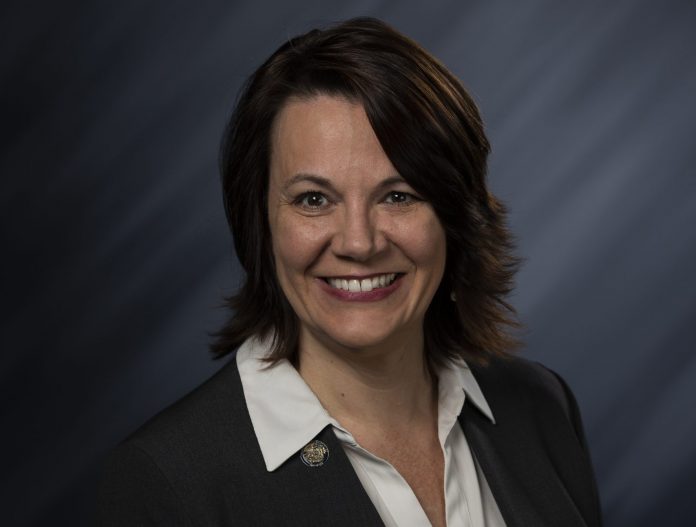Vincennes University launches Employer Gateway to streamline hiring, training and work-based learning
VINCENNES, Ind., September 2, 2025 – Vincennes University has launched the Employer Gateway, a one‑stop website designed for business and industry partners. The new site makes it easy to connect with resources for hiring VU graduates, training current employees, and engaging in work‑based learning opportunities.
The Employer Gateway is optimized for mobile and desktop, giving employers quick access to the information they need—whether they are recruiting talent, upskilling their teams, or exploring collaborative learning options.
Visit the Employer Gateway at vinu.edu/employer-gateway
EPD DAILY ACTIVITY REPORT
FOOTNOTE: EPD DAILY ACTIVITY REPORT information was provided by the EPD and posted by the City-County-County Observer without opinion, bias, or editing.
Handgun Discovered By Staff At Delaware School
On 9/3/2025 an EPD Juvenile detective was requested to Delaware School after school administrators
learned a 6th grade student brought an unloaded handgun to school. School staff was initially notified that the
student had the handgun in his backpack, which was in his locker. The handgun was located and secured before
EPD detectives arrived. The student involved admitted to bringing the handgun to school but denied any intent
to use it. The student was transported to YCC and faces additional disciplinary action from EVSC.
The swift response by Delaware staff ensured the safety of everyone inside the building. There were no
threats made to any students or staff during this incident.
HOT JOBS
|
||||||||||||||||||||||||||||||||||||||||||||||||||||||||||||||||||||||||||||||||||||||||||||||||||||||||||||||||||||||||||||||||||||||||||||||||||||||||||||||||||||||||||||||||||||||
|
|
Robbery Investigation Leads to Two Arrests on Evansville’s East Side
Officers were dispatched to the area of 600 N Green River Rd (Plato’s Closet) at just after 7:00 pm on
9/2/2025 for a holdup in progress. Officers were informed that a black male was attempting to rob the store
while armed with a gun. Additional information stated the male fired one shot inside the store before fleeing. As
officers arrived, they received additional calls that the same subject had robbed the nearby Chuck E. Cheese.
The male subject also fired a shot inside the business.
Responding officers located a male subject matching the description nearby, but he fled from officers on
foot to a nearby apartment. Officers surrounded the apartment until one of the occupants, Dwon Collins, exited.
When asked who the male subject who fled was, Collins stated he did not know. A short time later the suspect,
identified as Raquavion Cooper, came outside and was taken into custody.
Through the investigation, it was determined Cooper was the suspect in both robberies. A firearm was
located and seized near the scene.
Dwon Collins was charged with Assisting a Criminal after it was learned that he lived at the apartment
with Cooper. Raquavion Cooper was charged with Robbery, Criminal Recklessness, Pointing a Loaded Firearm
and Resisting law enforcement
Indiana Earns Top Credit Rating from All Three Major Agencies
INDIANAPOLIS (Sept. 2, 2025) — Indiana has earned a AAA credit rating from all three major credit-rating agencies: S&P Global Ratings, Moody’s Investors Service, and Fitch Ratings. The AAA credit rating is the highest rating possible, and receiving it from all three major credit agencies demonstrates the State’s leadership in disciplined fiscal management, economic resilience, and long-term financial stability.
“Indiana’s AAA rating is more than a financial milestone,” said Governor Mike Braun. “It’s a signal to taxpayers, investors, and businesses that our state is well-managed, fiscally responsible, and focused on delivering growth for Hoosiers throughout the State.”
Only 14 states in the country have this top rating from all three agencies, with Indiana holding a AAA rating from all three rating agencies since 2010.
Indiana has active budget management, low debt, strong and transparent fiscal policies, and budgetary reserves that provide the foundation for an economy that has benefited from recent economic-development investments, said S&P Global, Moody’s, and Fitch respectively.
“The AAA rating is the gold standard and allows Indiana to borrow at lower interest rates,” said Indiana Secretary of Management and Budget Lisa Hershman. “That saves taxpayer dollars and strengthens the state’s ability to invest in infrastructure, education, and public services. It also strengthens Indiana’s competitive edge in attracting new business and expanding economic opportunity statewide.”
This fiscal responsibility allows the state to protect itself during economic downturns. Indiana stays resilient and continues to invest in Hoosiers. That investment pays off in good economic cycles as the investments prosper and Indiana still has resources to fund opportunities as they arise.
If you think redistricting is crazy now, check out the history books
NIKI KELLY, Indiana Capital Chronicle
I’m on my third decade covering the Indiana General Assembly, so I’ve seen a lot. But a mid-cycle redistricting will be a new one.
I say “will” because it seems like an inevitability at this point. So, I researched the history of apportionment and redistricting in Indiana.
What I found is that the partisan fights about gerrymandering are as old as Indiana.
- The 1825-26 apportionment “embroiled lawmakers in a bitter struggle even though members had not yet divided into political parties,” according to the Centennial History of the General Assembly, 1816 to 1978.
- In 1832, residents of Cass County complained because they were placed in the sixth congressional district, composed of Marion and surrounding counties in the central part of the state, even though Cass was separated from the rest of the district by the Miami Reservation. This made Cass the only county that did not enjoy contiguity with its district.
- A Whig newspaper warned early in 1845 that if the opposition won a majority, the state would be “gerrymandered in all unseemly shapes, without, the least regard to equality.”
- In 1879, one representative suggested dividing the state into equally populated districts without regard to politics. His motion was tabled.
We should all be glad we don’t live in the early days of statehood, when the population was growing rapidly and new counties were created regularly. Double districts and floterial districts were downright crazy.
The cycle of counting people and drawing boundaries was originally every five years. The Constitution of 1851 changed redistricting and apportionment to every sixth year.
Bolting
Bolting — or leaving the state to break quorum — was a regular feature.
In 1861, Republicans introduced a congressional districting bill and Democrats walked out.
“The bolters typified the cavalier attitude of both parties,” the centennial history book said.
“I saw them pretty nearly all in a batch, and the answer was ‘tell them to go to hell,’” said the Republican doorkeeper who tracked down the absentees. The bill was dropped.
In 1871, Democrats tried to redistrict early, and 34 Republicans resigned to prevent a quorum.
“The most spectacular party bolt” occurred in 1925. Republicans had huge majorities in both chambers, so Senate Democrats took a bus to Ohio.
“For the next two days, U.S. 40 between Indianapolis and Dayton was jammed with process servers and Republican politicos trying to coax, cajole, or coerce the fugitives back to their seats in the Indiana Senate,” the history book shows.
Eventually, the Ku Klux Klan’s Grand Dragon, D.C. Stephenson, went to Ohio to break the deadlock.
Sometimes the redistricting happened after new counts. At other times, the General Assembly skipped it for years, especially if the party in control liked the districts as they were.
Maps were found unconstitutional by the U.S. Supreme Court multiple times.
Modern times have been more a little more orderly — but not always neutral. Lawmakers have only redistricted after the decennial census, though Republicans did briefly try a mid-decade maneuver in 1995 before abandoning it.
“The most successful exercise so far in all-out partisanship occurred in Indiana,” The New York Times wrote in 1981.
“Republicans used their majorities in both State Houses, the governorship and the computers of Market Opinion Research, a Detroit company that works for Republican districting efforts, to take maximum advantage of the shrinkage of the Indiana delegation to 10 members from 11,” the paper continued. “As a result, a delegation that now has six Democrats and five Republicans could easily become one with seven Republicans and three Democrats.”
Even when Democrats controlled the Indiana House in 1991 and 2001, Republicans controlled the Senate, so the affair had to be bipartisan. The GOP has had complete control of apportionment and redistricting after the last two census counts in 2011 and 2021.
Nothing is forever
Remember — though the current use of algorithms and computer programs is much harder to overcome — that ultimately, voters still decide.
“The history of state apportionment and congressional redistricting shows clearly that partisanship was the foremost consideration at each session where such laws passed. Gerrymandering by the majority always governed the drawing of district boundaries in the congressional elections between 1890 and 1930 illustrate both the efficacy and danger of the device for party advantage,” the history book said.
In 1892, Democrats elected 12 of 13 congressmen with only 41.1% of the vote due to the Democratic districting act of 1891. But under the same bill in 1894 Republicans elected 11 congressmen.
Under the Republican act of 1901, however, Democrats elected 11 and 12 congressmen respectively in 1908 and 1910. Democrats remained almost totally dominant in 1912 and 1914 under the redistricting act of 1911 but in 1916 Republicans began 14 years of dominance under the same bill.
“So, while both parties succeeded in making districts safe for themselves temporarily, in the long run popular sentiment prevailed, proving that in Indiana, there was no such thing as a gerrymander in perpetuity.”
Governor ceremonially signs bill co-sponsored by Rep. Ledbetter to strengthen public safety
Gov. Mike Braun recently ceremonially signed into law a bill co-sponsored by State Rep. Cindy Ledbetter (R-Newburgh) criminalizing the sale, possession and use of signal jamming devices.
Illegal under state and federal law, signal jamming devices pose a dangerous threat to public safety by blocking electronic communications systems. Ledbetter said that jammers can prevent people from making crucial 911 calls and interfere with communications used by first responders, leaving them without vital situational awareness.
“This new law helps protect our law enforcement officers by ensuring this technology doesn’t prevent them from using their electronic communications tools,” Ledbetter said. “A critical part of our job at the General Assembly is updating state laws to encompass any threat posed by new technologies. Remaining vigilant empowers public safety officials to keep our communities safe.”
Ledbetter said the law goes a step further to protect public safety officials by elevating penalties for using signal jammers to disrupt the communication of a public safety agency.
The law also protects critical communications infrastructure such as wires and equipment used to provide communications services to customers.
SEA 26 received bipartisan support in both chambers during the 2025 legislative session. To learn more, click here.











